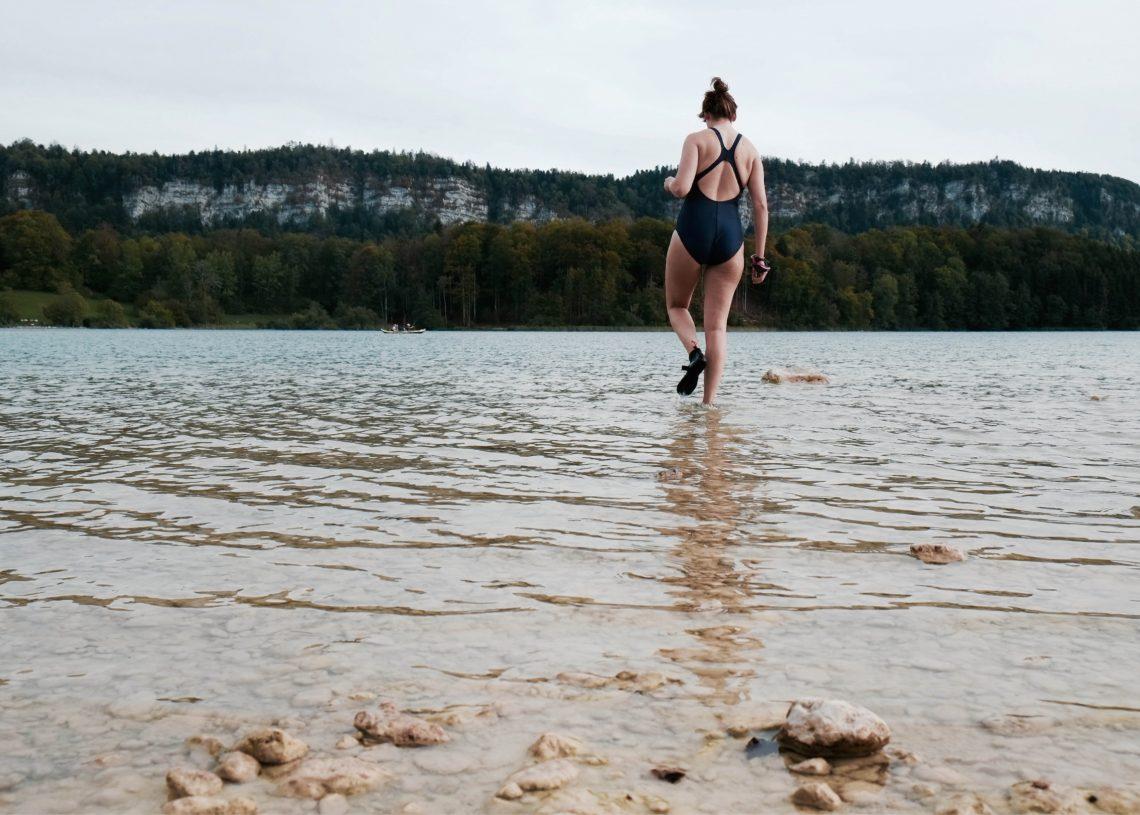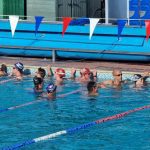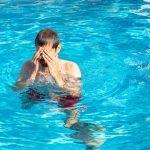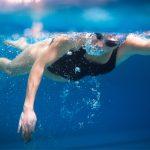
Back to basics: how do I get my face in the water?
“I’m struggling to get my face in the water when swimming at my local lake, and I would love some advice!” Simon Griffiths has advice for relieving anxiety in open water.
“In a pool or lido, front crawl is my preferred stroke and I feel relaxed in the water and don’t seem to have any problems with bilateral breathing. However, when I get into open water – usually my local swimming lake, occasionally the sea – I switch to breaststroke. Partly, I treat it as a different experience and I like keeping my head above the water to catch up with friends and take in everything around me as I swim, but I would like to be able to swim crawl outdoors as I’d like to train for events next year. I don’t have any particular fears about deep water, but nevertheless when I put my face in the water, I instantly feel anxious and my breathing feels more urgent; I feel out of breath within a few strokes. It’s worse in cold water. Do you have any tips to help me feel more relaxed and enjoy swimming front crawl in open water, please?”
There are many reasons why putting your face in the water might be challenging
This is an interesting one, and a more common issue than you imagine. There are all sorts of reasons why people have difficulty putting their face in the water for open water front crawl swimming. I struggle when the water is below around 10 degrees because it hurts my cheekbones, teeth and the back of my head, whereas some people are less bothered by this. Our editor, Ella, told me that putting her face in the water was something she also had to work on:
“I had the exact same problem when I first started event swimming. I used to close my eyes when my face was down in the water because I didn’t want to see something looking back at me. I would open them to breathe and sight, that was it. It helped me massively,” she says.
You don’t say why you feel anxious. Is it about what you might see? I know I’ve been spooked by something as simple as a cloud passing in front of the sun and changing the shade of the water below me. I expect many an open water swimmer has experienced a jolt because of some half-seen thing in the water: a shark-shaped rock (it’s surprising how many rocks become shark-shaped when you’re swimming) or a blob of seaweed resembling a jellyfish. Or maybe it’s what you might not see? In the Thames, it can be so murky that you can’t even your hand in front of you and I know we sometimes share those waters with a rather large seal.
Or maybe it’s more of a generalised anxiety that you can’t pin down. You mentioned that your breathing becomes more urgent. It’s possible the two are linked. You also say that the cold is a contributing factor. It may be that cold water shock causes your breathing rate to increase, which in turn makes you feel anxious.
Things you can try
You might have to wait until spring or go on holiday somewhere warm before practising these, but here are a few things you could try.
First, make sure you are fully relaxed and comfortable in the water before trying to swim front crawl. It can take a few minutes for your reaction to cold water to subside and your breathing to normalise. Stand, tread water or swim gentle head-up breaststroke while you acclimatise. You could also try splashing water on your cheeks and neck to cool the skin down, so the impact isn’t so strong when you later come to putting your face in the water.
Second, try submerging your head between breaths while swimming breaststroke, rather than doing head-up breaststroke. These brief immersions may help reassure you that it’s OK to put your face in for longer periods.
Third, when you start to swim front crawl, concentrate on breathing out and relaxing while your face is down. Sigh into the water. It may be that you’re unconsciously holding your breath because you’re anxious, which makes you breathless and more anxious. Actively breathing out should combat this and make it easier to breathe in again. This is something you can practise in the pool during the winter too.
Also, invest in a comfortable pair of goggles that you can trust won’t leak. And swim with a friend. Just having someone near you can boost your confidence.
Finally, you don’t mention how frequently you breathe but I’d recommend initially breathing to your most comfortable side every other stroke. Or, if you’re comfortable with bilateral breathing, breathe every three. I sometimes see people taking four, five or six strokes between breaths. This is OK for sprinting but will quickly leave you breathless on longer swims.
I hope this helps. One of the joys of swimming outdoors is the opportunity to see things in the water (even if they sometimes make you jump). There’s so much more variety than the tiles on the bottom of the pool.
Let us know how you get on.
Bonus tip
Channel swimming coach and triple crown swimmer Loretta Cox sent us this additional tip after reading the above:
In my many years of experience, the one thing that all my swimmers struggle with in cold water and crawl is the cap. The small gap often left between the cap and goggles when exposed to extreme cold is VERY UNCOMFORTABLE. I tell my pupils to adjust their cap to come down and meet their goggles but ensure it does not encroach under the goggle seal. This small trick has worked 100%. It stops that initial ice cream head. It has helped many breaststrokers change to crawl.
What do you want to know about outdoor swimming? Send us your questions and we’ll do our best to answer: info@outdoorswimmer.com. We love hearing from you!








